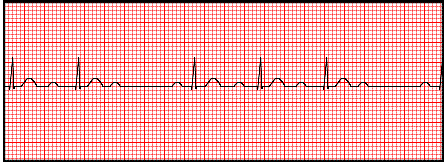FREE Certified Cardiographic Technician Questions And Answers
Which cardiac chamber pumps blood with low oxygen content to the lungs?
The right ventricle sends the right atrium's deoxygenated blood, which it has received, to the lungs. Deoxygenated blood is transported from the body to the right ventricle by the right atrium. Blood with oxygen is transported from the lungs to the left ventricle by the left atrium. Providing the body with oxygenated blood is the left ventricle.
Which of the following best describes how nitrates work?
Nitrates are helpful in the diagnosis, treatment, and prevention of angina. They function by widening the coronary arteries, improving the heart's blood flow. They reduce preload and afterload by widening peripheral veins and, at higher doses, other peripheral arteries. Beta-blockers reduce the heart's sympathetic nervous system response. Beta-blockers, calcium channel blockers, and other drugs lower heart rate and reduce cardiac contractility.
In fast-responding cardiac tissues, which step of the action potential involves rapid depolarization and bringing the resting cell to threshold?
Rapid depolarization of the cell to threshold, which activates voltage-dependent sodium channels, constitutes phase 0.
What lead is most susceptible to respiration?
Since Lead III is the component most impacted by respiration, the waveforms may alter according to the respiratory cycle. A Q wave that only arises in lead III and is not connected to other equivalent changes in other leads is therefore not relevant.
Which of the following describes how action potentials should travel through the heart?
An action potential travels through the heart's electrical system in this order: from the sinoatrial (SA) node to the atrioventricular (AV) node to the bundle branches, and finally to the Purkinje fibers.
Which kind of heart block can be noticed in the electrocardiogram (ECG) strip below?

A first-degree heart block occurs when the PR interval is longer than 0.2 seconds, but the PR interval typically remains constant and the QRS is not dropped. The pictured ECG is a second-degree heart block, type 1. This rhythm is also known as Mobitz I or Wenckebach. With this heart block, the PR interval gets longer with each beat until eventually a P wave occurs, but a QRS does not follow (a beat is skipped). After the skipped beat, the pattern starts over. This rhythm lacks the rising PR interval seen in the Mobitz I block and has a fairly constant ratio of P waves to QRS complexes. The atria and ventricles beat independently during a third-degree heart block, which is also known as a complete heart block.
What is the standard size of the calibration mark that indicates the sensitivity of an ECG machine while calibrating one?
The calibration mark should be 10 mm tall (two huge squares), demonstrating the sensitivity of the ECG. This mark may typically be seen at the start of each line of the ECG on the left side of the page. When this is configured properly, a deflection of 10 mm will be recorded on the trace for each millivolt obtained from the patient.